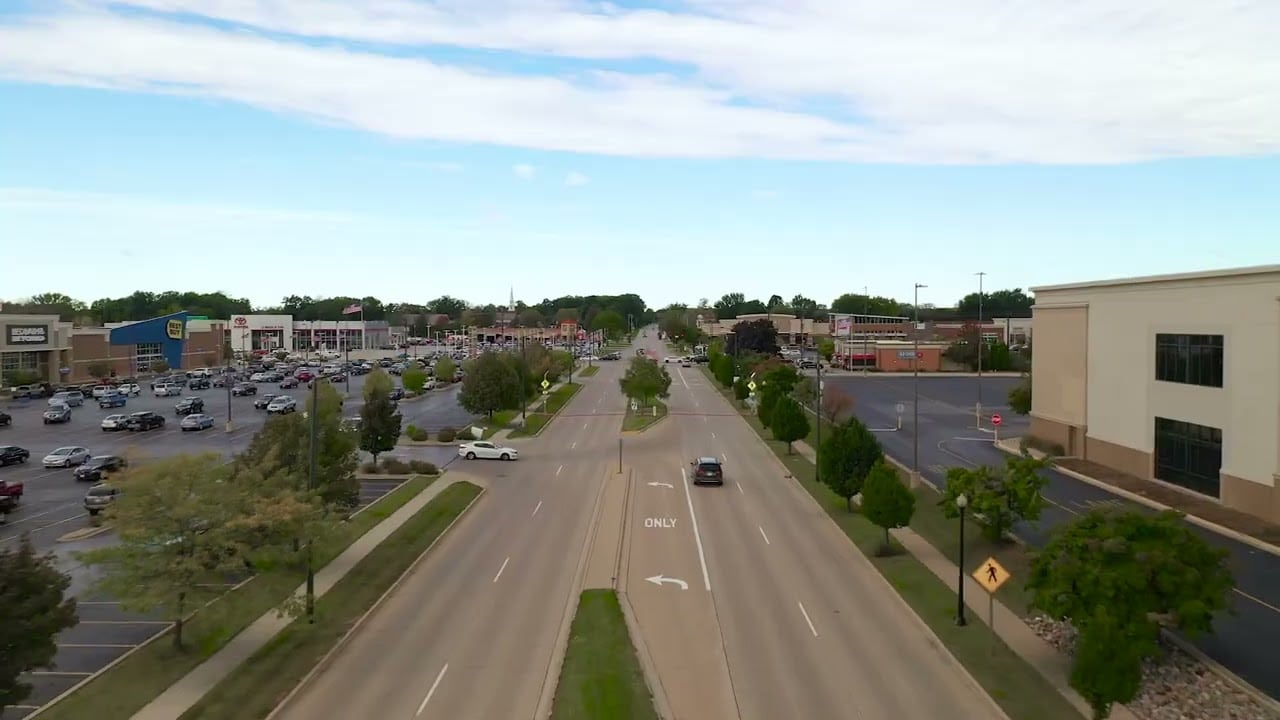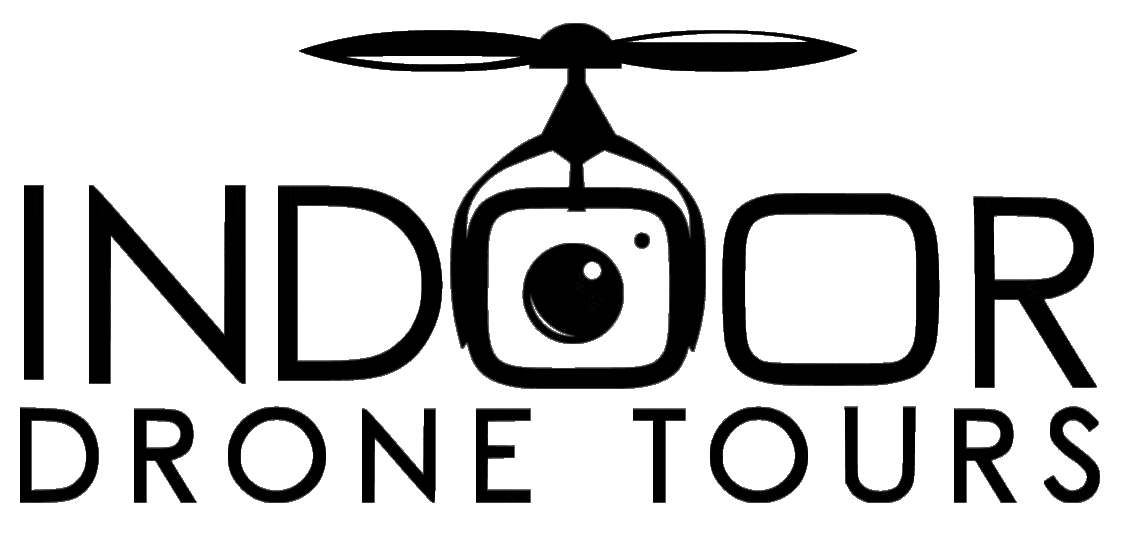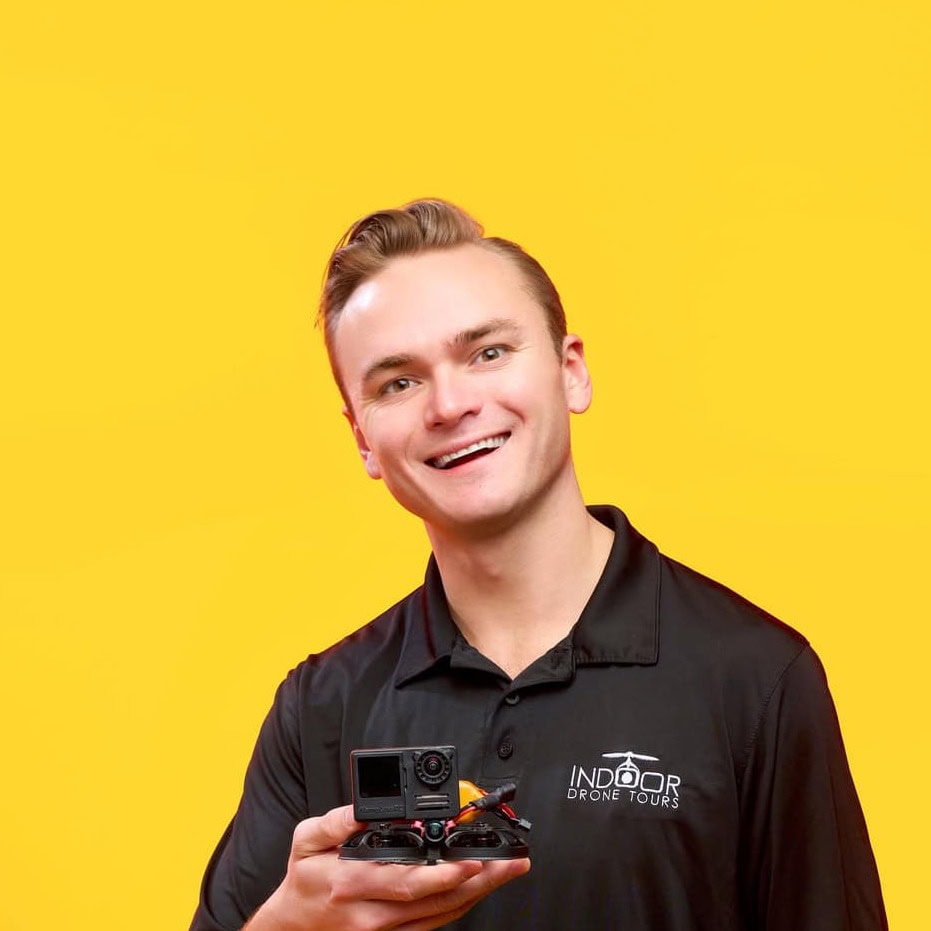Soaring Above: Mastering Real Estate Aerial Videography
Author: Indoor Drone Tours
Posted 14 Jun 2024The competition in the real estate market is steep so standing out requires creativity and innovation. It’s not hard if you know where to start. Enter aerial videography, a powerful tool that elevates property listings from flat to fantastic. This Indoor Drone Tours guide on real estate aerial videography, dives into the world of real estate drone photography and footage, to equip you with the knowledge to capture stunning visuals that will leave a lasting impression on potential buyers.
Importance in Real Estate Marketing

Aerial videography and drone photography offer a unique bird’s-eye view that shows off a property and its surroundings in a way that traditional ground-level photography cannot. This perspective in real estate aerial videography enhances visibility and draws necessary attention to the property’s layout, size, and position on the lot while providing context through nearby amenities, parks, or water features.
Studies detail how real estate aerial videography can increase engagement by captivating viewers with dynamic, immersive videos featuring smooth transitions and aerial sweeps, allowing potential buyers to virtually explore the property. Additionally, high-quality aerial footage gives any real estate agent a competitive edge in a crowded market by demonstrating professionalism and a commitment to providing comprehensive information to potential buyers.
At Indoor Drone Tours we know all about real estate aerial photography and real estate aerial videography. For 4 years we have been catering to this industry. We create seamless drone video tours for commercial properties, businesses & brands, hotels, residential real estate and so much more. What to learn about how our services can increase your engagement?
Contact Indoor Drone Tours Today!
The Basics of Real Estate Aerial Videography
Before you take to the skies, it’s best to have more than an idea of some of the essentials of real estate photography drones, and real estate aerial videography.
Equipment Essentials
By carefully selecting the right equipment, you can elevate your real estate photography and aerial videography. This careful selection ensures that you produce stunning visuals for your real estate listings that impress clients and showcase properties in the best possible light.
Drones
When diving into real estate with aerial photos and videography, selecting the right drone can make or break your entire production. Try to choose a reliable drone known for its high-quality camera and stable flight capabilities. Stability is crucial for capturing smooth, professional footage that showcases properties effectively. Popular options include models from DJI, such as the Phantom or Mavic series, which are well-regarded for their performance and user-friendly features.
Cameras
The camera on your drone should offer high resolution and excellent low-light performance. The high resolution ensures that your drone images and videos capture every detail of the property, while good low-light performance allows for flexibility in various lighting conditions, ensuring clear, crisp footage during twilight or cloudy days. Look for cameras with at least 4K resolution and large sensors to achieve the best results.
Accessories
To enhance your real estate aerial videography, consider investing in essential accessories. Gimbals are crucial for maintaining camera stability and producing smooth, cinematic shots. Extra batteries are a must-have to avoid interruptions during shoots, allowing you to capture extended footage without worrying about power. Additionally, propeller guards can protect your drone and its surroundings, especially when flying in tight spaces or near obstacles. Other useful accessories might include ND filters to manage exposure and a high-quality carrying case for safe transportation of your equipment.
But when in doubt, have them custom-built. Our Indoor Drone Tours mini drones for real estate are custom-built to weigh less than 1/2 lb with small enclosed propellers, allowing us to fly drones safely indoors and near objects.
Learn More About Our Custom Drone Services Today!
Planning Your Aerial Shoot
By carefully planning your aerial shoot with attention to location, surroundings, weather, and timing, you can ensure that your drone real estate photos and videos are of the highest quality, effectively showcasing properties in their best light and maximizing their appeal to potential buyers.
Location Scouting
When planning a real estate aerial videography shoot, the first step is choosing the right areas of your property to showcase from above.
Choosing the Right Property
Selecting the right parts of your properties will truly elevate an aerial perspective. Large estates, properties with unique landscaping, waterfront homes, or those with stunning architectural features often look especially impressive from above. An aerial view can highlight the grandeur and layout of these properties, providing potential buyers with a comprehensive understanding of the property’s appeal.
Assessing Surroundings
Once you’ve chosen the property, take the time to assess the surrounding area. Look for potential obstacles such as trees, power lines, and tall buildings that could interfere with your drone’s flight. Additionally, consider privacy concerns; avoid capturing footage of neighboring properties and ensure you’re compliant with local regulations regarding drone usage in residential areas. Being aware of restricted areas, such as near airports or government buildings, is also crucial to avoid any legal issues.
Weather and Timing
For breathtaking aerial footage, choosing the right weather and timing is paramount to getting the perfect footage.
Ideal Weather Conditions
For the best results, aim to shoot on days with clear skies and calm winds. Clear skies ensure that your footage is well-lit and vibrant, while calm winds help maintain the stability of your drone, resulting in smoother and more professional-looking videos. Avoid days with heavy clouds, rain, or high winds, as these conditions can negatively impact both the quality of your footage and the safety of your drone.
Best Times of Day
The time of day can significantly affect the quality of your aerial footage. Shooting during the early morning or late afternoon during flight time provides optimal lighting conditions known as the “golden hour.” During these times, the sun is lower in the sky, casting a warm, soft light that enhances the colors and details of the property. This lighting helps to create visually appealing and inviting footage that can captivate potential buyers.
Preparing for Flight
By thoroughly preparing for your flight and thoughtfully setting up your shots, you can ensure that your aerial photography and videography are both safe and professional, resulting in stunning visuals that effectively showcase the beauty and unique features of real estate properties.
Pre-flight Checklist
Preparing for a successful aerial shoot starts with a meticulous pre-flight checklist.
Battery Check
Before you take off, make sure all your batteries are fully charged. This includes not only the drone’s battery but also any spare batteries and the remote controller. Fully charged batteries ensure you can complete your shoot without interruptions, giving you ample time to capture the perfect footage.
Calibration
Calibrate your drone’s compass and sensors to ensure accurate and stable flight. Proper calibration helps the drone maintain its position and navigate effectively, especially when flying in complex environments. This step is crucial for preventing drift and ensuring the safety of your drone.
Safety Checks
Conduct a thorough inspection of your drone and all related equipment for any signs of damage or wear. Check the propellers, gimbals, and body of the drone for cracks or loose parts. Ensure that all connections are secure and that there are no visible issues that could impact the drone’s performance. Regular safety checks help prevent accidents and maintain the longevity of your equipment.
Setting Up Shots
Setting up your shots effectively is key to capturing stunning aerial footage.
Camera Settings
Adjust your professional-grade camera settings to achieve optimal exposure, focus, and frame rate. For real estate videography, you typically want a high resolution (such as 4K) and a frame rate that suits the type of footage you’re capturing. Set the exposure to balance the light, ensuring that neither the highlights nor shadows are overly pronounced. Make sure the focus is sharp to capture every detail of the property.
Composition Techniques
Utilize proven composition techniques to create visually appealing shots in your real estate aerial videography. The rule of thirds involves dividing your frame into nine equal parts and placing key elements along these lines or at their intersections, adding balance and interest to your shots. Leading lines guide the viewer’s eye through the scene, often towards a focal point, creating depth and perspective. Symmetry adds a sense of harmony and balance, making your shots aesthetically pleasing. Incorporating these techniques can significantly enhance the visual appeal of your footage, making it more engaging for viewers.
But in no way are these endeavors that you need to worry about. Use Indoor Drone Tours services for just about anything from apartment leasings to social media ads and sales materials. We’ll do the heavy lifting!
See What Our Clients Have To Say!
Executing the Aerial Shoot
By mastering smooth flight techniques and thoughtfully capturing key features and surrounding areas, you can make real estate photographers create compelling and informative aerial videos. These videos will not only highlight the best aspects of the property but also give potential buyers a comprehensive view of what it would be like to live there.
Flight Techniques
Mastering flight techniques is essential for capturing captivating aerial footage that showcases properties in their best light. Here are some ways to achieve professional results.
Smooth Movements
When flying your drone, aim for smooth, fluid movements to avoid jerky or abrupt footage. Gentle and gradual maneuvers will produce professional-looking videos that are easy on the eyes and convey a sense of stability and control. Practice maintaining a steady pace and using slow, deliberate turns to capture seamless footage that viewers will appreciate.
Dynamic Angles
Experiment with different angles and perspectives to add variety and interest to your shots. Try flying drones at various heights and angles to capture the property from multiple viewpoints. Low-angle shots can highlight the grandeur of a property, while high-angle shots can provide an overview of the entire area. Don’t be afraid to get creative and try new angles to find the most flattering perspectives.
Capturing Key Features
When creating compelling real estate videos, capturing the key features of a property can make all the difference.
Highlighting Property Features
Focus on the unique selling points of the property, such as pools, gardens, architectural details, or any standout features. These elements often make a property special and can be the deciding factor for potential buyers. Use your drone to get close-up shots and sweeping views that highlight these features in the best possible light. For instance, a slow flyover of a beautifully landscaped garden or a sweeping shot around a striking architectural element can make these features stand out.
Showcasing Surrounding Area
Include footage of the surrounding area to provide context and showcase nearby amenities and scenic views. Highlighting nearby parks, schools, shopping centers, or scenic landscapes can add significant value to your real estate video. Potential buyers and real estate agents often want to see not just the property itself but also the neighborhood and its amenities. Aerial shots can effectively demonstrate proximity to key attractions and the overall appeal of the area.
California Market Center Office Drone Tour by Brookfield Properties
Post-Production Techniques
Post-production techniques are pivotal in transforming raw footage into polished, professional content. Understanding and mastering editing software is essential in this process.
Editing Software Overview
By leveraging these post-production techniques and mastering the capabilities of leading editing software, editors can deliver impactful and polished video content and aerial drone images that meet the highest professional standards.
Popular Editing Programs
Adobe Premiere Pro, Final Cut Pro, and DaVinci Resolve stand out as industry-leading editing programs. Adobe Premiere Pro, part of the Adobe Creative Cloud suite, is favored for its robust feature set and seamless integration with other Adobe products. Final Cut Pro, developed by Apple, excels in intuitive interface design and optimization for macOS. DaVinci Resolve, known for its advanced color grading capabilities, has gained popularity for its comprehensive editing, color correction, visual effects, and audio post-production tools.
Features and Functions
Mastering key tools within these software platforms is essential for effective editing. Fundamental techniques include precise cutting to trim and rearrange footage, seamless transitions to enhance flow between scenes, and color correction to achieve a consistent and professional look across all clips. These tools empower editors to craft narratives that captivate audiences and convey messages effectively.
Enhancing Footage
When there are more than 3.5 billion people consuming video content, going beyond basic editing is a must. Enhancing footage is necessary and involves advanced techniques to elevate visual quality and impact.
Color Grading
Color grading plays a crucial role in setting the mood and tone of a video. Editors adjust color temperatures, contrasts, and saturation levels to achieve a cohesive and visually appealing aesthetic. This process ensures that each frame contributes to the overall narrative and visual identity of the project.
Adding Graphics and Text
Incorporating graphics and text overlays enhance the informational and aesthetic value of a video. Editors integrate elements such as property details, location markers, and other pertinent information directly into the footage. This not only clarifies content but also reinforces branding and professionalism.
Legalities and Copyright Concerns
By prioritizing legal awareness and incorporating these considerations into video production processes, creators and clients alike can collaborate confidently. Before you start employing drone photography and drone videography, please ensure that you are adhering to legal standards and safeguarding intellectual property rights.
Intellectual Property Rights
Navigating intellectual property rights in videography is crucial for both creators and clients alike.
Understanding Copyright
Understanding who owns the footage and its associated rights is fundamental. In most cases, the creator of the video retains copyright unless otherwise specified in a contract. Clients may acquire specific usage rights, allowing them to use the video for agreed-upon purposes while the creator retains ownership for potential future use or licensing.
Avoiding Legal Issues
Respecting privacy rights is important to the integrity of the real estate industry. Filming in public spaces generally requires no consent, but filming individuals or private property necessitates permission. It’s crucial to obtain releases from identifiable people appearing in the video and to avoid filming in restricted areas without proper authorization, respecting both legal requirements and ethical standards.
Client Contracts and Agreements
Crafting clear and detailed client contracts is essential groundwork for any successful videography project, ensuring both parties are aligned on critical aspects of usage and protection.
Clarifying Usage Rights
Clear and comprehensive contracts are essential to define how footage can be used and shared. Contracts should specify the scope of usage rights granted to the client, including distribution channels, geographical limitations, and duration of use. This ensures mutual understanding and prevents misunderstandings or disputes regarding the video’s intended use.
Liability Protection
Including liability protection clauses in contracts safeguards against potential legal issues. These clauses outline responsibilities, warranties, and indemnification terms. They protect creators from claims arising from copyright infringement, defamation, or other legal challenges related to the content produced. Additionally, professional liability insurance can provide further protection against unforeseen legal liabilities.
Our drones are operated by seasoned, FAA 107 certified and licensed pilots. Utilizing virtual reality goggles, our indoor drones provide a pilot’s-eye view from the drone’s front, enabling seamless navigation from room to room. What’s even more important is we have umbrella insurance coverage for our drone business for up to $5M in damages so you can receive professional drone services with no worries!
Book Your Indoor Drone Tours Aerial Videography Services Today!
Summary
Mastering real estate aerial videography and photography requires a deeper understanding of the technical aspects of drones and cameras, adhering to legal requirements, planning meticulously, and executing with precision. This skill can significantly enhance real estate marketing by providing stunning visuals that attract and engage potential buyers.
But again, this is not a task you or your real estate business need to undertake on your own. Leave it to the professional drone pilots, professional drone photographers, and professional drone videographers at Indoor Drone Tours to capture the footage you need to elevate your real estate marketing.
Contact Indoor Drone Tours Today!
Disclaimer: Indoor Drone Tours (IDT) does not provide legal advice, insurance guidance, or regulatory compliance services. The information in this article regarding drone laws, regulations, and insurance requirements is for general educational purposes only and should not be considered professional legal or insurance advice.

